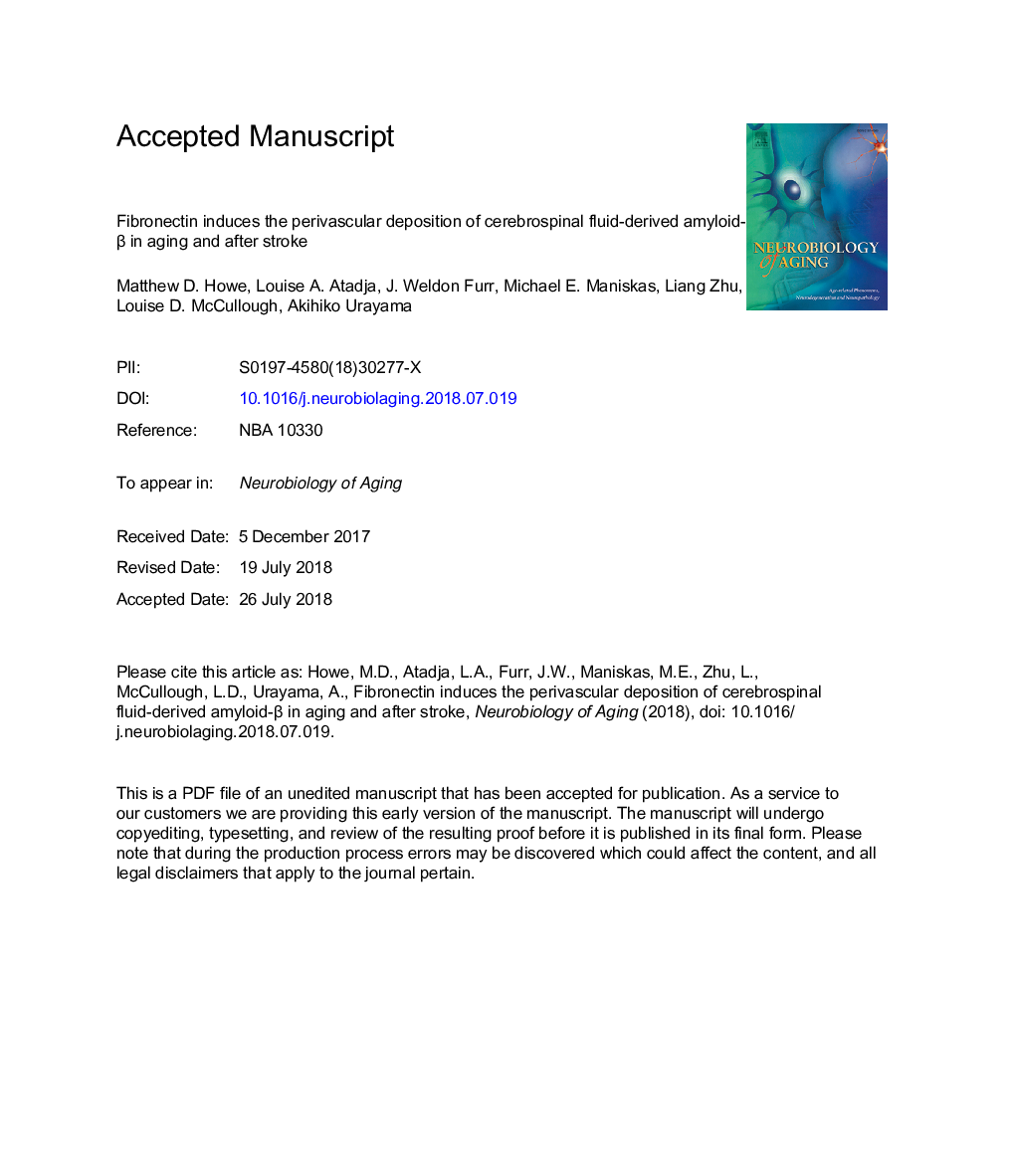| Article ID | Journal | Published Year | Pages | File Type |
|---|---|---|---|---|
| 8953505 | Neurobiology of Aging | 2018 | 39 Pages |
Abstract
Cerebral amyloid angiopathy occurs after stroke, but the mechanism underlying the initial amyloid-β deposition is not fully understood. This study investigates whether overexpression of fibronectin and its receptor, integrin-α5, induces the perivascular deposition of cerebrospinal fluid-derived amyloid-β after stroke in young and aged animals. We found that stroke impaired the bulk flow of cerebrospinal fluid into the brain parenchyma and further showed that perivascular amyloid-β deposition was enhanced in aged animals with stroke, which colocalized with integrin-α5 in the basement membrane. Furthermore, we found that stroke dramatically increased the cortical levels of fibronectin and integrin-α5, with further increases in integrin-α5 in aged animals with stroke, fibronectin bound amyloid-β in vitro, and fibronectin administration increased amyloid-β deposition in vivo. Finally, aging and stroke impaired performance on the Barnes maze. These results indicate that fibronectin induces the perivascular deposition of amyloid-β and that increased integrin-α5 further “primes” the aged brain for amyloid-β binding. This provides a novel molecular and physiological mechanism for perivascular amyloid-β deposition after stroke, particularly in aged individuals.
Related Topics
Life Sciences
Biochemistry, Genetics and Molecular Biology
Ageing
Authors
Matthew D. Howe, Louise A. Atadja, J. Weldon Furr, Michael E. Maniskas, Liang Zhu, Louise D. McCullough, Akihiko Urayama,
